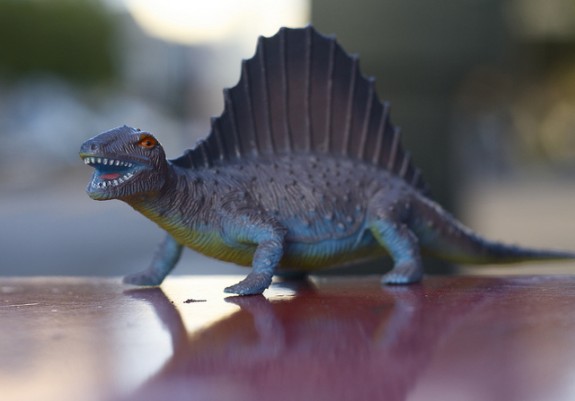World’s Greatest Extinction May Have Actually Been Two Extinctions in One
The Permian-Triassic extinction nearly wiped out life on Earth

Life on Earth during the Permian era was quite complex. This little guy is a Dimetrodon. Photo: Stephen Woods
Life on Earth began at least 2.7 billion years ago, though maybe as much as 3.5 billion years ago, when simple microscopic organisms arose from the ooze. And, roughly 250 million years ago, the Earth came as close as it has ever been since to turning into a burning, lifeless world. Known as the Permian-Triassic boundary extinction, or, more dramatically, the Great Dying, 90 percent of all marine life, and 70 percent of all land animals were wiped out when the temperature soared and the oceans acidified.
What exactly caused the Great Dying is a matter of considerable debate: some people think volcanic eruptions did it, some think a meteorite did it. Some think the oceans ran out of oxygen, or that they became too acidic.
In a new study published in the journal Nature Geoscience, researchers found that the Permian-Triassic extinction may not have been one massive, life-destroying event, but two, spaced apart by an 180,000 year “recovery phase.”
Looking at fossil and sediment samples from the ancient continent South China, and tracking the appearance of 537 different species, the researchers found that the PT extinction took place in two waves. They found that the first wave wiped out all but a third of the identified species, and those that survived often did so within a much narrower range of habitats. The second pulse finished off the bulk of these survivors, and a large chunk of the new species that managed to crop up during the downtime.
The researchers think that the two-pronged approach to nearly wiping out all life on Earth had a big role in shaping the species that carried on into the future. Rather than just being required to withstand one mighty blow, the creatures needed to survive, adapt to their new world and then survive again.
The idea that the world’s worst extinction may not have been one event, but two, means that scientists can have a little more wiggle room when trying to understand what exactly could have caused such a mess. The authors of the new study suggest that, based on which species were wiped out, the first wave was likely either caused by volcanic winter or rampant ocean acidification. The second pulse, they say, was caused by extensive anoxia—where “a spread of oxygen-poor conditions” led to a collapse of deep-ocean life.
More from Smithsonian.com:
Earth’s Worst Extinction May Have Been Key to Dinosaur Origins
The Top 10 Greatest Survivors of Evolution
/https://tf-cmsv2-smithsonianmag-media.s3.amazonaws.com/accounts/headshot/smartnews-colin-schultz-240.jpg)
/https://tf-cmsv2-smithsonianmag-media.s3.amazonaws.com/accounts/headshot/smartnews-colin-schultz-240.jpg)